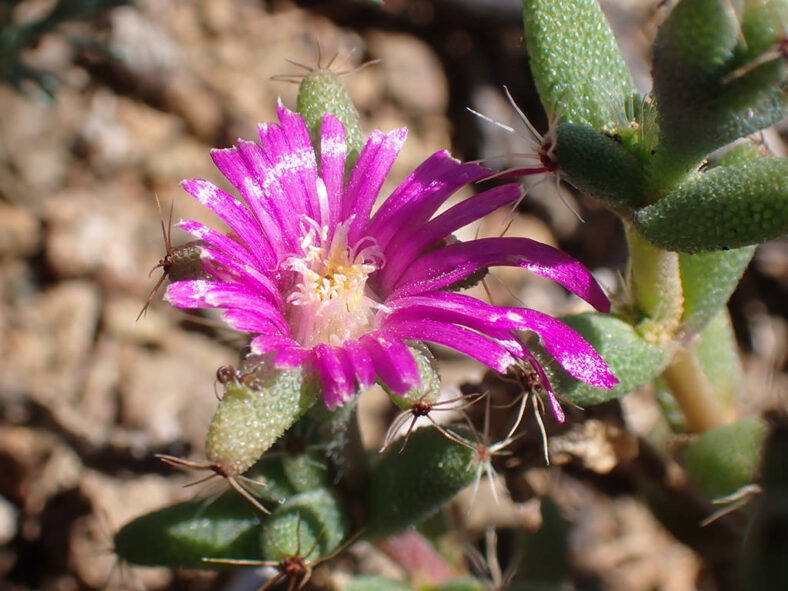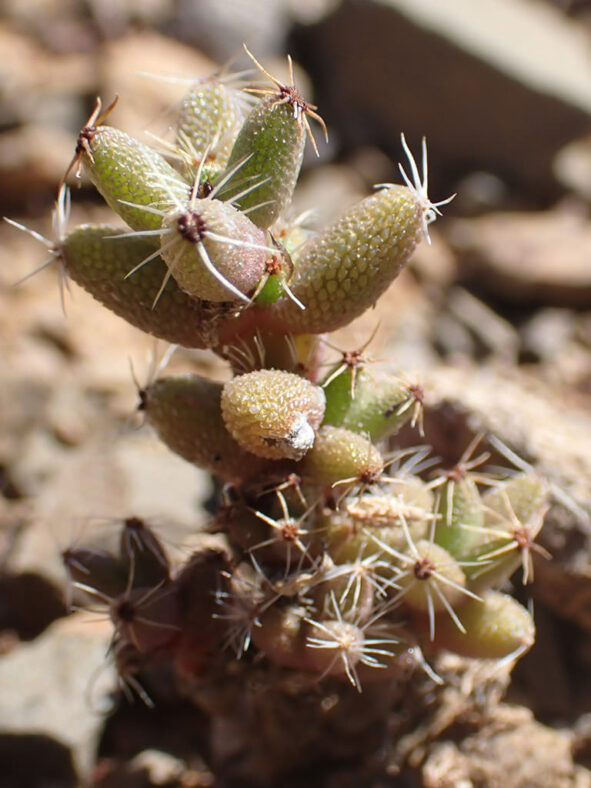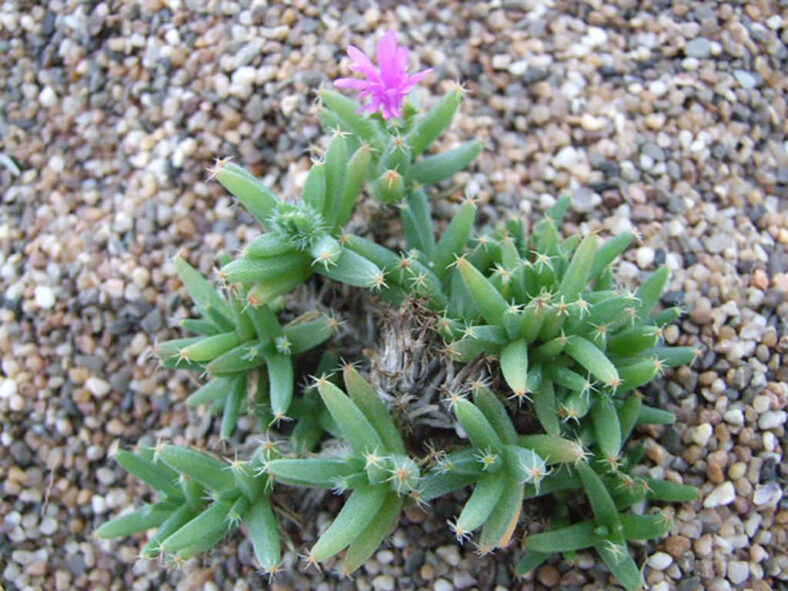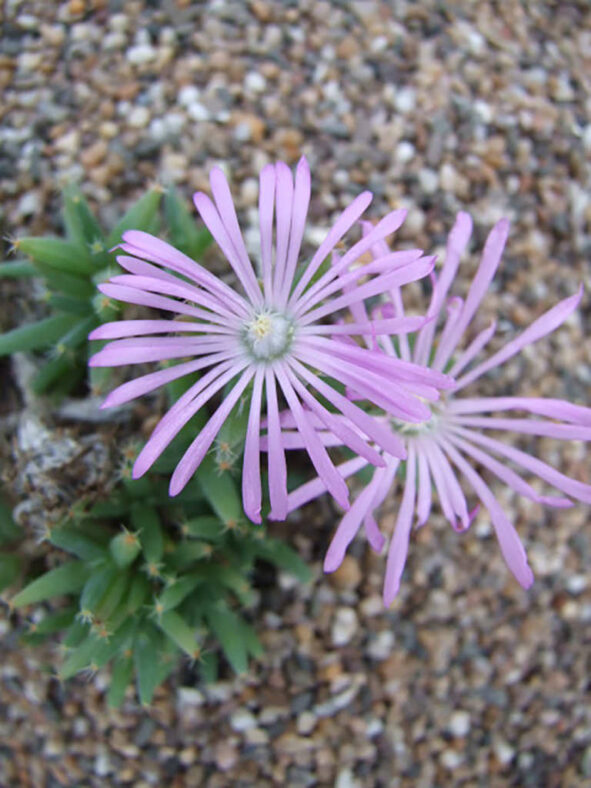Trichodiadema emarginatum is a beautiful small plant that resembles a cactus and produces daisy-like flowers.
Scientific Name
Trichodiadema emarginatum L.Bolus
Scientific Classification
Family: Aizoaceae
Subfamily: Ruschioideae
Tribe: Ruschieae
Genus: Trichodiadema
Etymology
The specific epithet "emarginatum" (pronounced e-mar-jin-NAY-tum) means "deprived of its edge" and refers to the notch in the apex of the leaves.
Origin
Trichodiadema emarginatum is native to South Africa. It occurs in the Little Karoo in the Western Cape province.
Description
Trichodiadema emarginatum is a succulent shrublet with decumbent branches that bear fleshy, gray-green, papillate leaves with a diadem of brownish-white bristles at the tip. The leaves are nearly cylindrical, ascending, and can measure up to 0.7 inches (1.7 cm) long and 0.25 inches (0.6 cm) in diameter.
The flowers are pink and can reach a diameter of about 1.4 inches (3.5 cm). They usually appear in the summer and fall.
Trichodiadema emarginatum is similar to Trichodiadema marlothii, but its fruits are 5-locular capsules, while the latter has 6-locular capsules.

How to Grow and Care for Trichodiadema emarginatum
Light: Trichodiadema emarginatum requires bright light but not too much direct sunlight. So, a windowsill that receives 4 to 5 hours of direct sunlight in the morning and partial shade in the afternoon will be a perfect spot for indoor growing.
Soil: The plant thrives in porous soil, allowing the water to drain away quickly. Therefore, use commercial soil for succulents or make your own well-draining mix.
Temperature: High temperatures are not a problem as long as there is plenty of fresh air, but this plant is not cold-hardy. It grows best in USDA Plant Hardiness Zones 9b to 11b, with average minimum winter temperatures ranging from 25 to 50 °F (-3.9 to 10 °C).
Watering: To keep your Trichodiadema emarginatum healthy, it is most important to know when, how much, and how often to water it. During the dormant period, usually in winter, the plant requires little or no water. From spring to fall, water it thoroughly but allow the soil to dry between waterings.
Fertilizing: As long as you repot this plant every two years, it does not need fertilizer.
Repotting: Even if it can stay happy in the same pot for years, once in a while, you can repot your plant to give it more space anytime during the growing season. However, the best time is at the beginning of the growing season.
Propagation: There are three methods to propagate this plant. The first method is to divide the clumps during the growing season, which is quite a simple process. The second method is to start the plant from seeds by sowing them in well-draining soil during spring. However, propagating the plant by stem cuttings can be challenging due to the high risk of rot.
Learn more at How to Grow and Care for Mesembs.
Toxicity of Trichodiadema emarginatum
Trichodiadema emarginatum is considered non-toxic and safe around kids and pets.
Links
- Back to genus Trichodiadema
- Succupedia: Browse succulents by Scientific Name, Common Name, Genus, Family, USDA Hardiness Zone, Origin, or cacti by Genus
Photo Gallery
Click on a photo to see a larger version.


